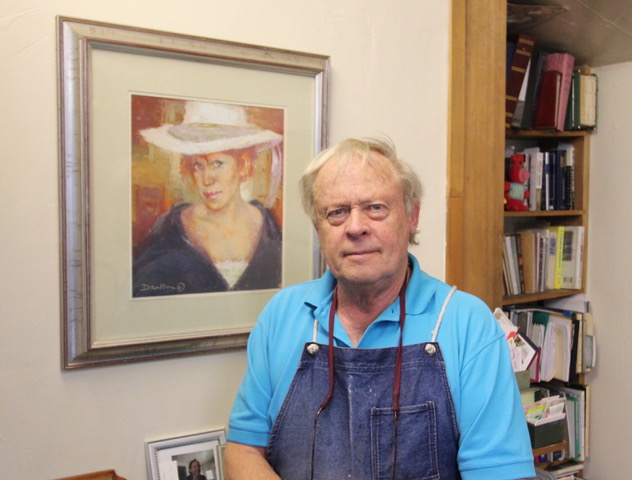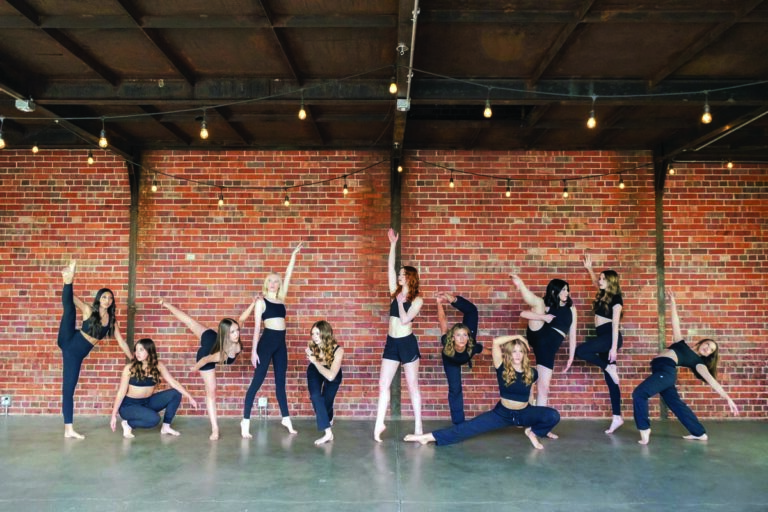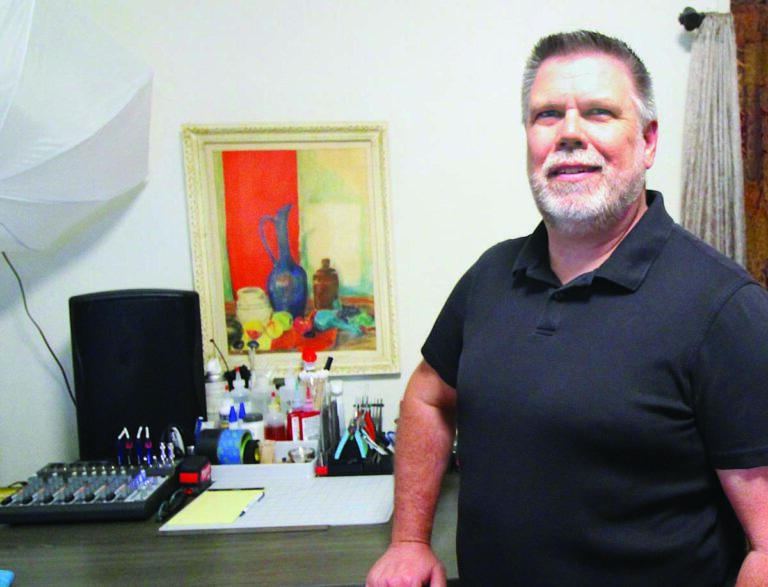“Creating a piece of artwork is a matter of starting with disorder and organizing it as you go,” says Wheat Ridge artist Doug Dawson of a concept presented to him years ago by an art history professor. “I’ve held on to that idea ever since.”
“The disorder may be a blank canvas or piece of paper. You start off with that disorder and then you put shapes down, or you put lines down, and with each thing you add to the canvas or paper, you’re organizing it.” He said this idea goes a long way to explain why some art can be “loosely done,” in which an artist might regard it as finished, while another work of art might be very, very detailed, yet the artist still thinks of it as unfinished.
“When you reach a state of organization that’s pleasing to you, then you’re finished.” Dawson teaches representational painting, and he tells his students that a representational painting is like a song.
“I use a musical metaphor in trying to help my students. The recognizable objects in the painting are the lyrics, but the underlying abstraction is the melody.” He says that although recognizable objects in the painting might consist of some interesting “words,” the painting becomes more compelling when the words are combined with a “melody” of texture and color to support ideas and feelings.
“I knew from a really early age that I had an inherent talent for art – it goes back to elementary school. I could draw a reasonable likeness when I was in third grade.”
But Dawson put his art interests on hold to become involved with the sciences. His path took him from his birthplace in Oak Park, Ill., through Macalester College in St. Paul, Minn., where he earned his undergraduate degree, to graduate school at Drake University in Des Moines, Iowa, where he was recruited by Denver Public Schools to teach science classes at Kepner Junior High. “In junior high, the big thrill in teaching is mostly being able to say, by the end of the day, ‘Billy sat in his seat the whole class time and didn’t get up and bother somebody.’ There isn’t a whole lot of satisfaction in that.”
So, in his late 20s, after teaching science for four years, he decided that art gave him more pleasure than anything else and gradually changed the total direction of his life. “Frankly, it’s easier to be involved when you’re teaching art, because there isn’t that academic kind of pressure, you know: ‘We’re going to read chapters four and five, and I will test you on it tomorrow.’ Teaching art to kids of that age is a more enjoyable experience. Almost anything they do, as long as they’re working at their art, you can find good in it.”
It was sensitivity to mood and feeling that gave rise to Dawson’s interest in creating portraits. “It was a reasonable assumption that if I could capture the expression on somebody’s face, I would be relating a mood or a feeling. Mood or feeling is part and parcel of painting people.”
When he began painting and teaching landscapes, he had to discover a way to relate the experiences and emotions so easily seen in human expression to landscape painting. “Because it’s usually easy to read human expression, I thought of human subject matter as falling into the general happy and sad categories – melancholy fell into the sad category. But happy and sad didn’t work so well for landscapes. Finally, I arrived at the assumption that the equivalency of happy and sad was sunny versus overcast. It’s still a mood or a feeling. “Gradually, I moved away from placing the emphasis on all my paintings being about mood or feeling to being about just the joy of design – the arrangement of shapes and colors and things like that.”
He says he still resorts to happy and sad when painting people and storytelling with figures. In landscape, he can be fixated on questions such as: Is it a sunny scene? Is it an overcast scene? “Night scenes sort of fall into that general overcast category. Design is all about color and shape and edges, and there’s joy in that.”
Until 2020, when the COVID-19 pandemic struck, Dawson taught 8-10 workshops across the country. “Clearly, of the number of the workshops I usually teach, last year we had about three-fourths of those dry up and disappear. So it impacted my life that way.”
Primarily known for his pastel paintings, Dawson is a nationally known artist with numerous awards and notable exhibitions from many art organizations, including the Pastel Society of Colorado and the Pastel Society of America, where he was inducted into its Hall of Fame in 2008. To honor his achievements, he was given the title of Master Pastelist by the Pastel Society of America (New York City) in 1985 and awarded the title of Master Circle by the International Association of Pastel Societies in 2005 (California).
A founding Board member of The Art Students League of Denver more than 30 years ago, Dawson continues to teach primarily oil and pastel painting there. “You can put a wonderful melody together with great lyrics. That’s what I’m after, for the most part, in my painting.”
Dawson’s works will be shown at The Pastel Society of Colorado’s 17th Mile High International Pastel Exhibition at the Curtis Center for the Arts, through June 26.






